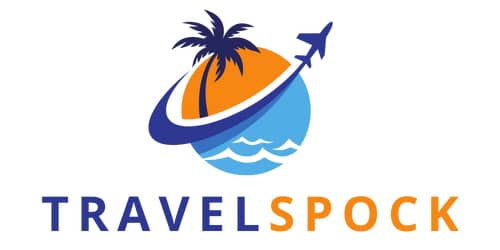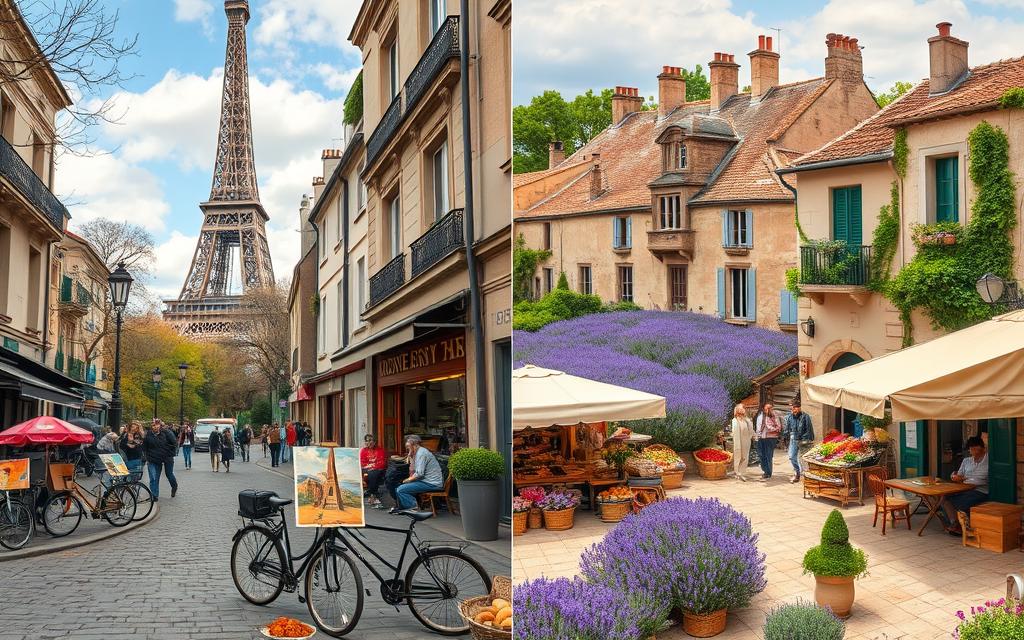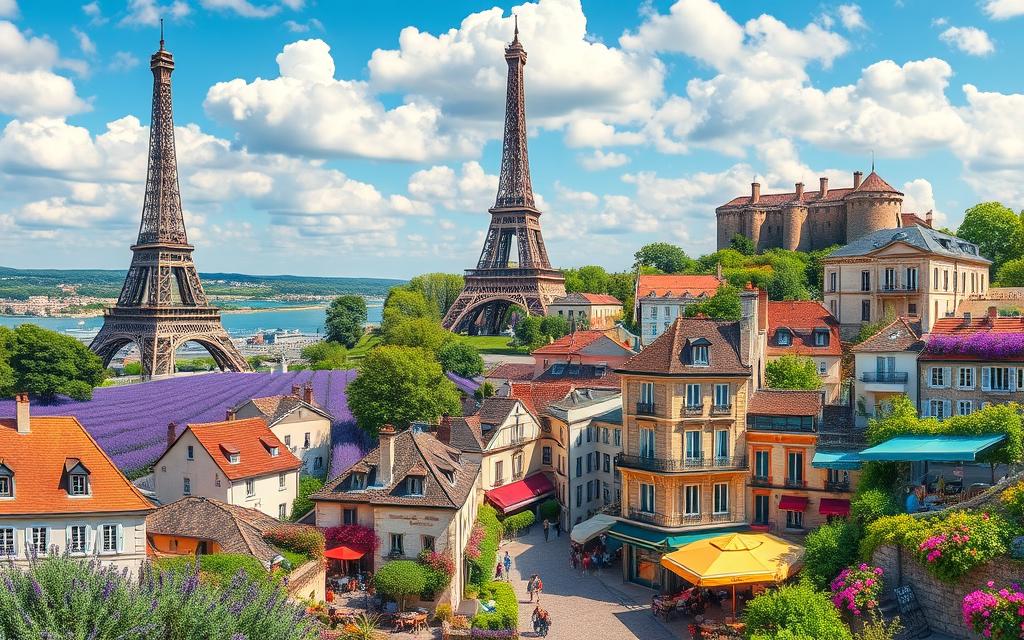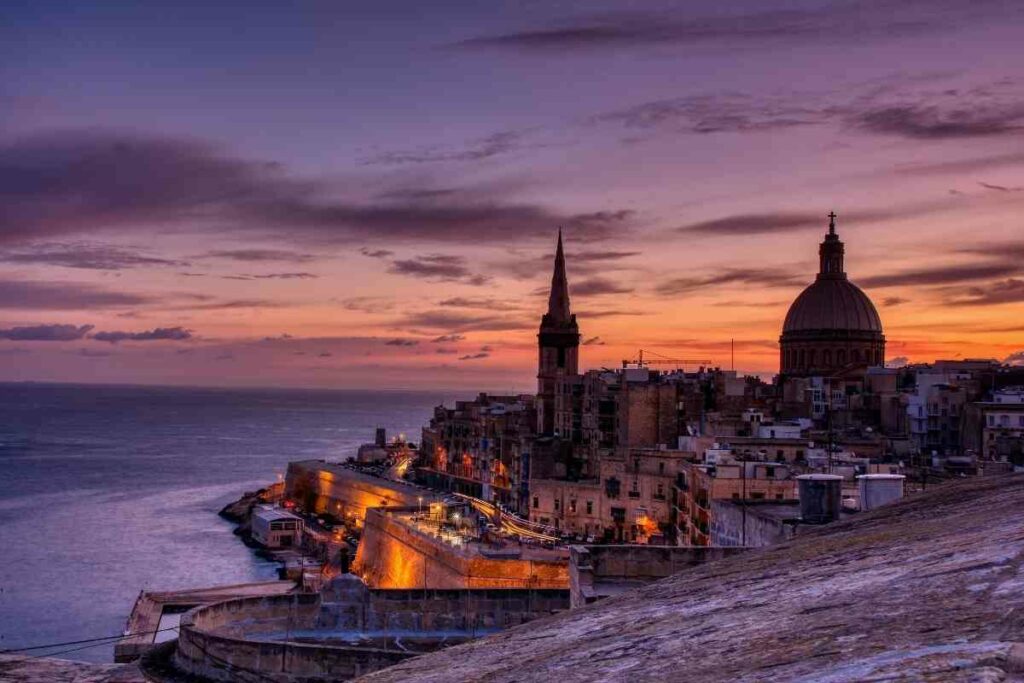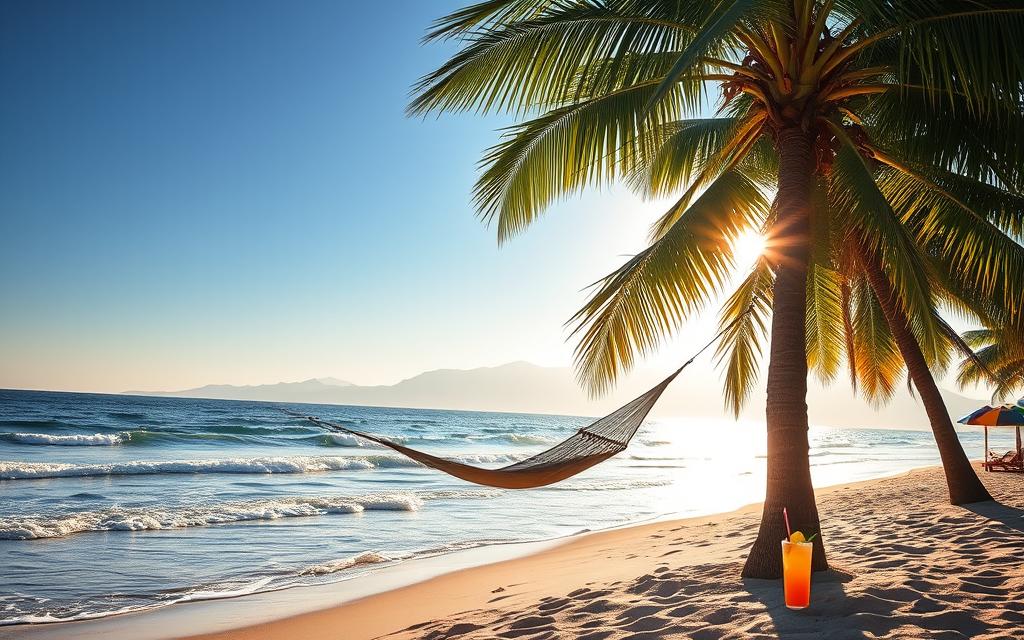Many tourists from all over the world converge in different parts of Europe for breathtaking sights and memorable outdoor activities.
Norway and Switzerland are both known for beautiful sceneries, historical sites, and rare natural features.
With plenty of unique attractions to visit in each country, choosing which country to visit is a daunting task.
In This Article – We will help you determine which is the best travel destination, Norway in the north or Switzerland in central Europe.
Best Attractions in Norway
There are plenty of attractions to explore in Norway from its amazing culture to the numerous natural wonders.
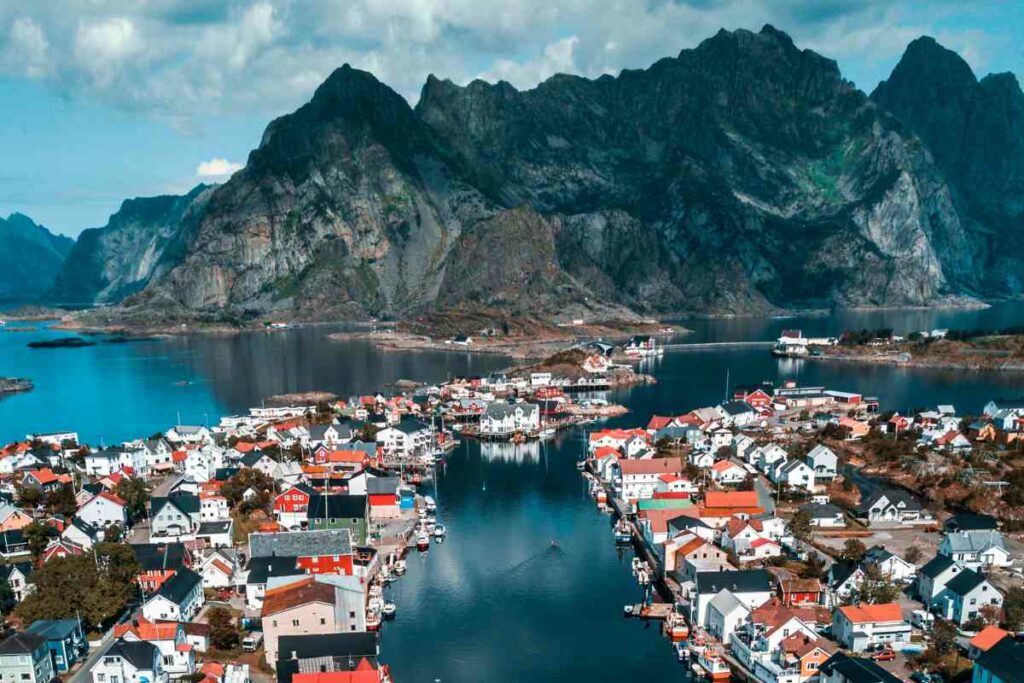
Additionally, despite its terrain, getting around the country is seamless thanks to its advanced transportation infrastructure.
Some of the top attractions you will likely see include the following.
1. The Northern Lights
Also known as the aurora borealis, the green hues that light up the Arctic Circle sky are a sight to behold and are on the bucket list of every adventure seeker.
This natural phenomenon is best seen in the northern towns of Norway between 65° N and 75° N, with September to March being the peak season.
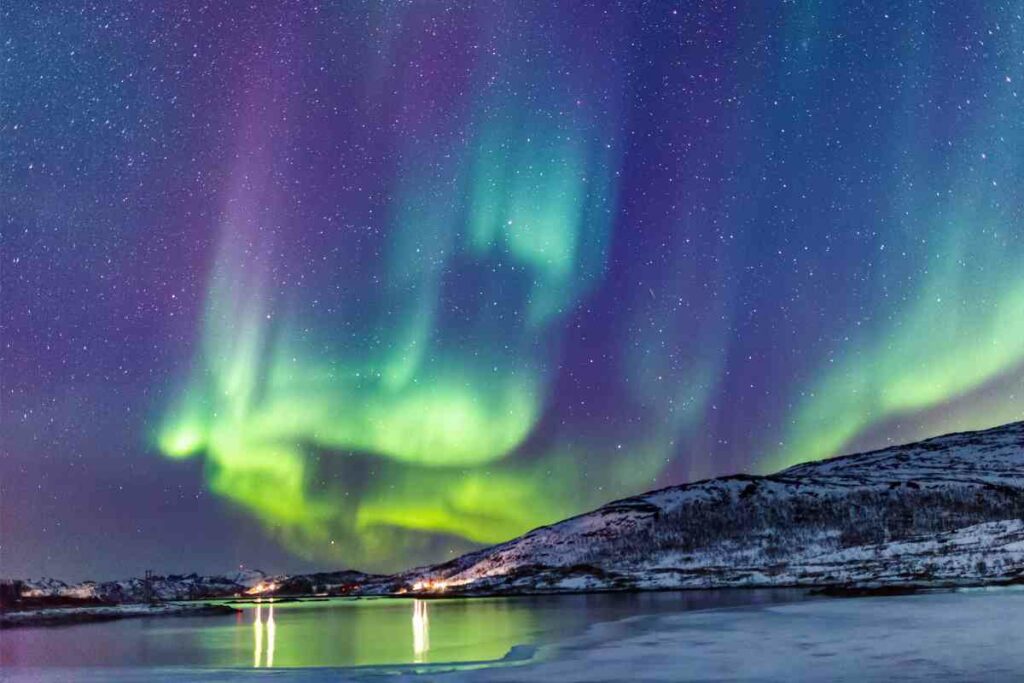
The Northern lights are brighter and more frequent as the nights are dark and long.
The best places to see the aurora borealis include:
- Lyngsalpene Mountain Range in Tromso– This location offers the best vantage point because the city sits right in the center of the aurora zone (At 69° N.)
- Trondheim which lies slightly outside the ideal position of the aurora oval (63° N)
- Svalbard Island is also another ideal viewing location.
For the best views, you should go on clear winter nights between 8 p.m. and 2 p.m.
During this time, you get a chance to see the panoramic views of the northern lights from the comfort of your hotel window.
2. Bergen Fjords
Bergen is a charming historic city best known for its fjords.
The fjords are filled with snow-capped mountain peaks, rolling hills, and lush green flora.
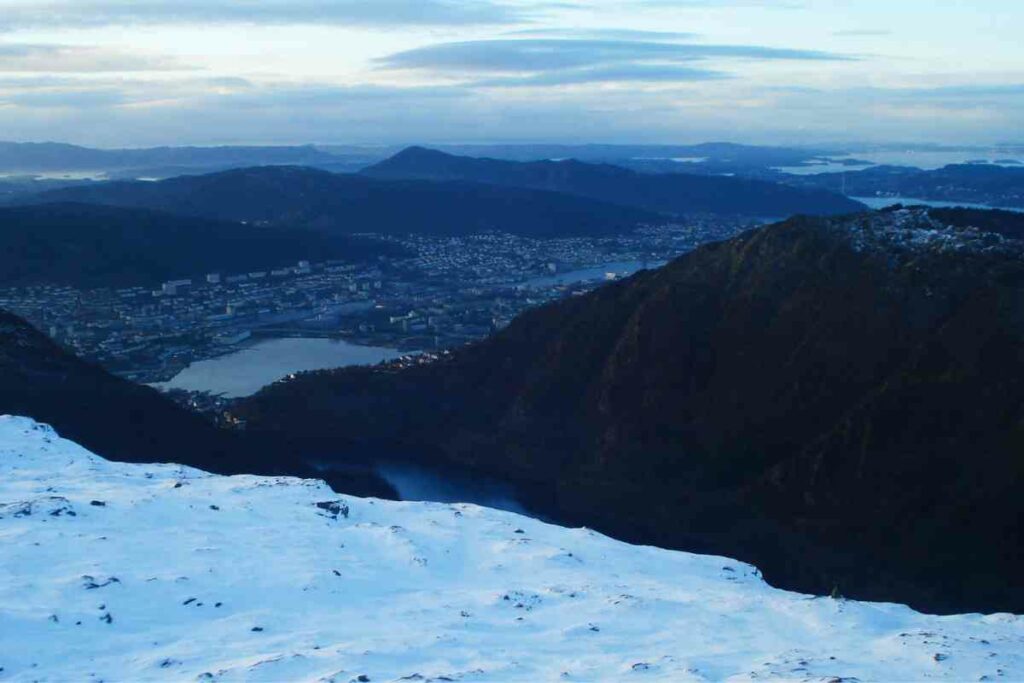
The fjords are rarely crowded, even in peak seasons, since there are plenty of vantage points to explore and photograph.
The three main fjords are:
- The Sognefjord (Norway’s deepest and longest fjord) is located in the northern part of the city.
- Byfjorden at the city’s harbor
- Hardangerfjord to the south, which is also home to the famous mountainous plateau, Trolltunga.
Besides the fjords, visitors adore the KODE Art Museums of Bergen, Norway’s second-largest art museum.
When you take tours through thousands of art, design, craft, and music objects in the exhibition you might be lucky to experience a Pablo Picasso masterpiece.
3. Stavanger
Stavanger is a buzzing metropolis that offers a unique blend of the old and modern.
One of the most visited sites is Pulpit Rock. This is a cliff overlooking the bright green waters of the Lysefjord 2000 feet below.
Sverd I fjell (Swords in Rock) is another monument you should visit when in the city to witness the symbolic three 33 feet tall swords.
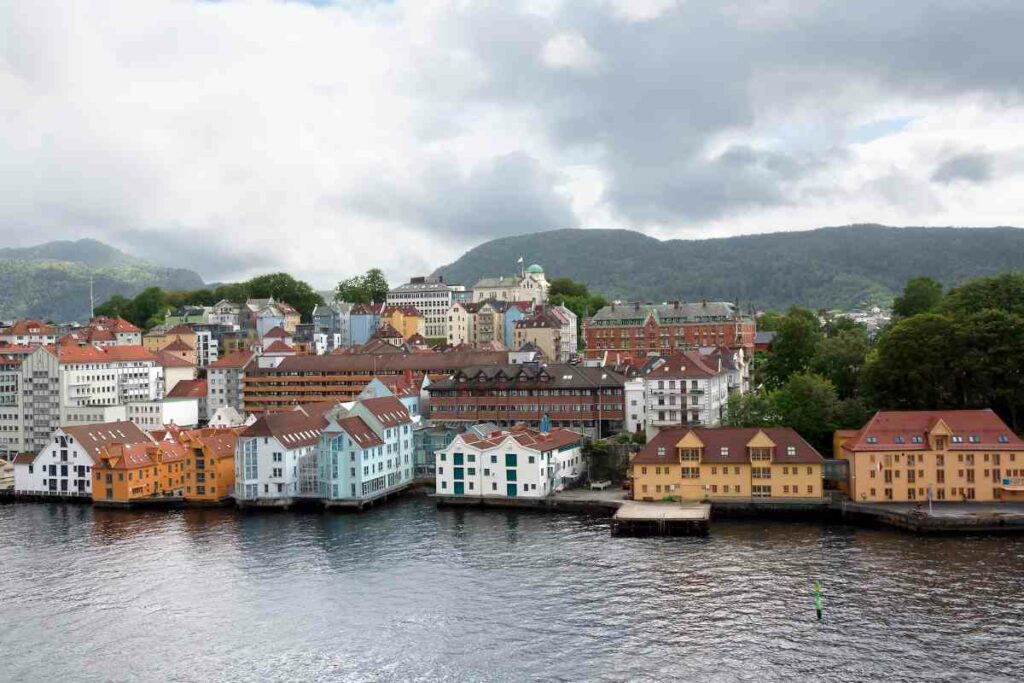
Another notable place to visit is Fargegaten. This is a famous street in Stavanger with bright color schemes on the walls.
Tourists and locals fill this street to take selfies for the gram or get tattoos before settling at cozy cafes and bars.
The city is also big on the musical scene hosting numerous concerts all year long, including:
- the MaiJazz Festival in May
- the International Chamber Music Festival in August
Other places to visit while in the city include:
- The streets of Gamle (Old) Stavanger (North Europe’s longest surviving wooden settlement)
- The Stavanger Art Museum,
- Th12th-century Stavanger Cathedral
- The Museum of Archaeology, where you will discover more about the Vikings’ culture and a 12,400-year-old skeleton of Finn, an Ice Age polar bear.
4. Oslo
Oslo is the Norwegian capital and seamlessly integrates the city’s urban life with outdoor activities.
Tourist visits usually start with guided tours inside the Norwegian Royal Palace.
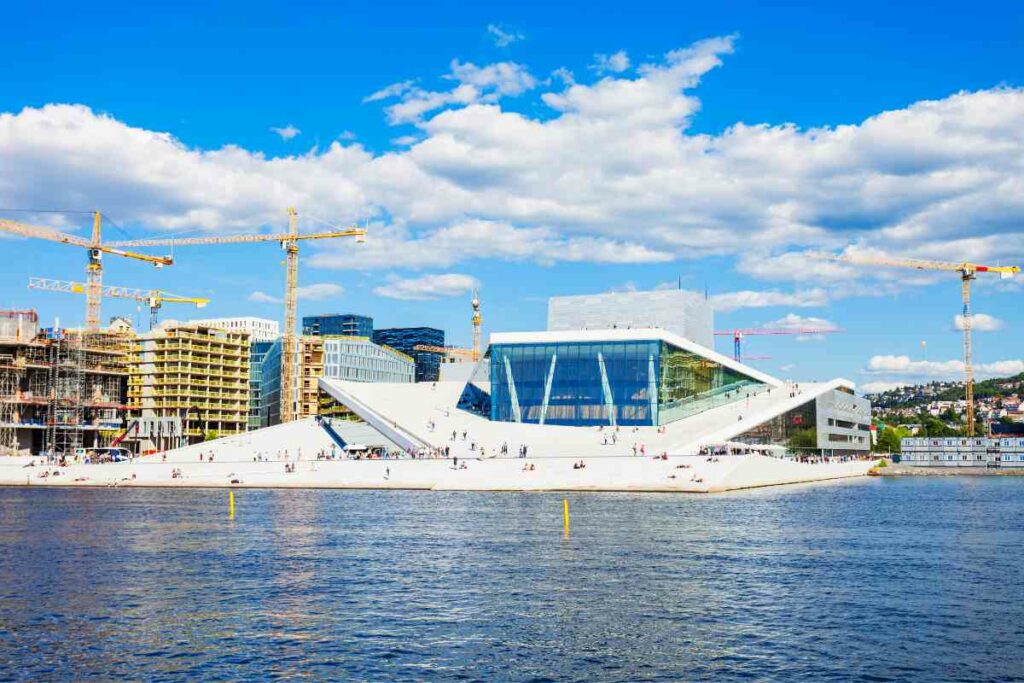
The tours cover the most significant halls, such as:
- the Cabinet Parlour and Cloakroom
- Banquet Hall
- and White Parlour
The Oslofjord connects the city to the North Sea and swarms in the summer with tourists kayaking, swimming, or cruising through the city.
Read Next ?
You will pass the infamous Oslo Opera House and the picturesque 12 Barcode skyscrapers, which transform the Oslo landscape from the medieval museums into a modern and futuristic city.
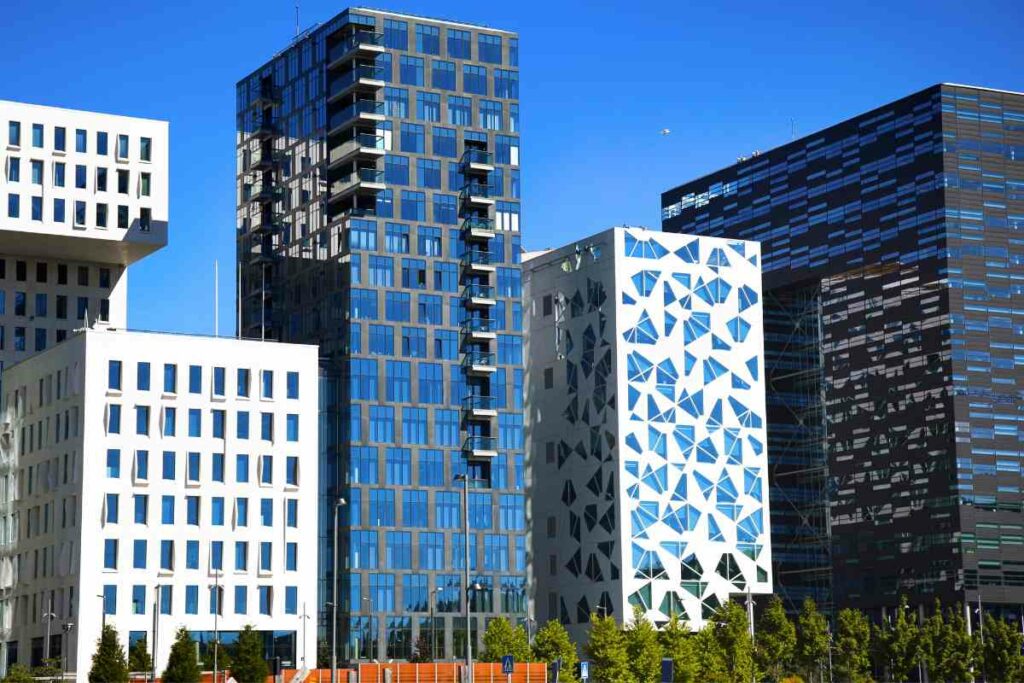
A visit to Oslo is never complete without visiting the Freia Chocolate factory.
Always Good Idea – Families and chocolate lovers frequent the factory to enjoy delicious treats as well as learn the history of Norwegian chocolate making.
End your tour at Karl Johan’s Street, which houses the National Theatre of Oslo, Parliament buildings, and the finest boutiques and eateries in the city.
Some other notable landmarks to visit are:
- Akershus Festning Fortress
- Aker Brygge neighborhood
- Holmenkollen Ski Jump
- The Natural History Museum
5. Svalbard Island
This island is located in the Arctic Ocean, and tourists flock to this archipelago both in summer and winter.
During the winter, the skies light up with numerous star constellations, which is the ideal time to catch a glimpse of the Northern Lights.
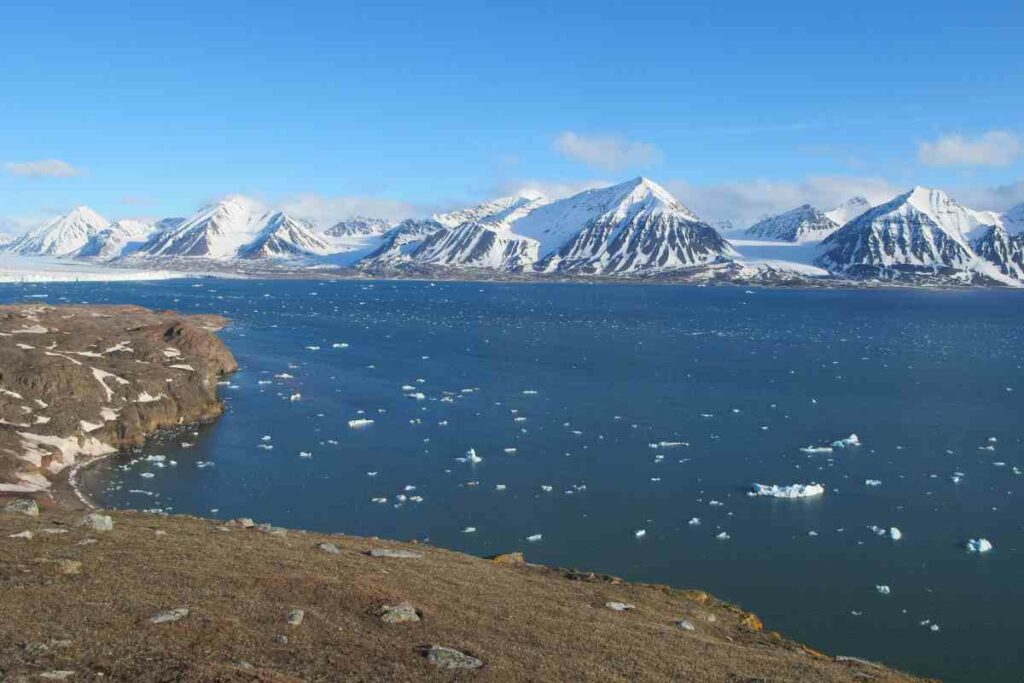
The summer’s main attraction is the midnight sun between the 19th of April and the 23rd of August. The sun never sets, illuminating the island for months.
This island is mainly remote, but you can spot polar bears, Svalbard reindeer, and Arctic foxes in the glazers and frozen tundras.
Humans reside around Longyearbyen, a cosmopolitan city that is the world’s northmost town.
It has decent restaurants, a brewery, and houses one of Scandinavia’s largest wine cellars.
Another popular outdoor activity is ice adventures.
You can take guided walking tours (snowshoeing) to explore the Svalbard landscape and the magical ice caves.
Alternatively – Go skiing down the fjords or drive up the mountains in snowmobiles or dog sleds. The island is the gateway into the Global Seed Vault, which holds seeds collected from every country in the world.
Best Attractions in Switzerland
Just like Norway, Switzerland is also known for its mountains.
However, it also has some amazing features from the ravishing alpine scenery to its beautiful blue lakes.
1. The Matterhorn
Also known as the jewel of the Swiss Alps, the Matterhorn is one of Europe’s most renowned mountain peaks.
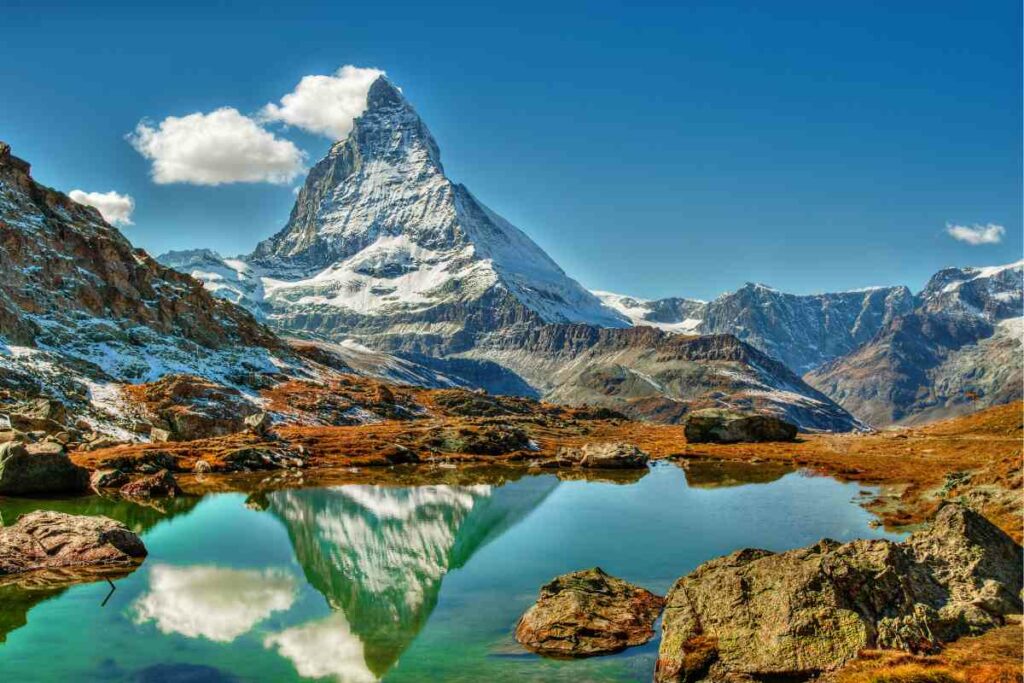
The 4.478-meter summit has an almost symmetrical pyramid shape and offers panoramic views overshadowing the Zermatt village.
The Matterhorn is made up of four ridges namely:
- Hörnli
- Furggengrat
- Liongrat
- Zmuttgrat
You can choose to hike the peak of the Alps. However, the terrain is treacherous.
Instead, you can use the hiking trails or take a cable car to the nearby Gornergrat or the Rothorn peaks to witness the sunlight reflecting the Matterhorn in Lake Stellisee.
Since Matterhorn is located in Zermatt, you can experience some of the town’s annual activities such as:
- The Horu Trophy (Europe’s largest open-air curling tournament) which is usually held in January
- The 42km Gornergrat–Zermatt Marathon. It is one of the toughest marathons since you must climb over 1,800 meters. It is usually held in July
2. Jungfraujoch
Jungfrau translates to ‘Top of Europe’ and is home to the Jungfraujoch, Europe’s highest railway station, at 3,500 meters.
If you miss the train, you can hike the Monchsjochhutte trail giving you breathtaking views of the Alps.
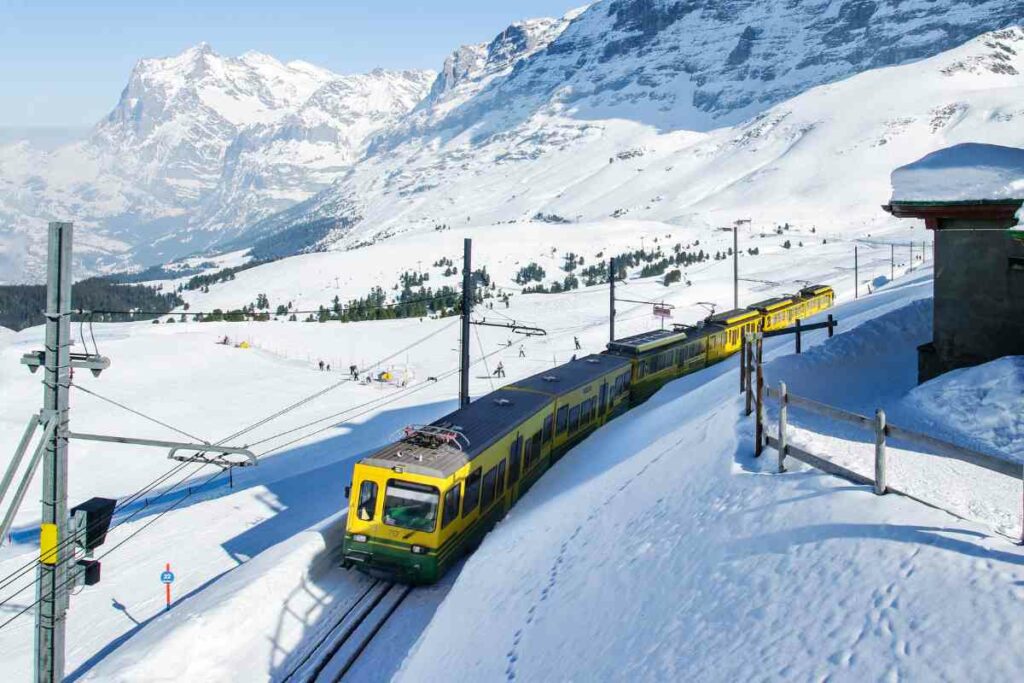
Another major attraction in the area is the Ice Palace. It lies 30 meters below Alage, Europe’s longest glacier.
Walk into the palace, and you will be amazed by the number and designs of ice sculptures.
Entry to the place is free and some sculptures you will see include:
- Birds
- Penguins
- Automobiles
- Furniture
- A bar carved from Alage’s surface.
3. Interlaken
Between Lake Thun and Lake Brien, lies Interlaken a paradise for adrenaline junkies and extreme adventurers.
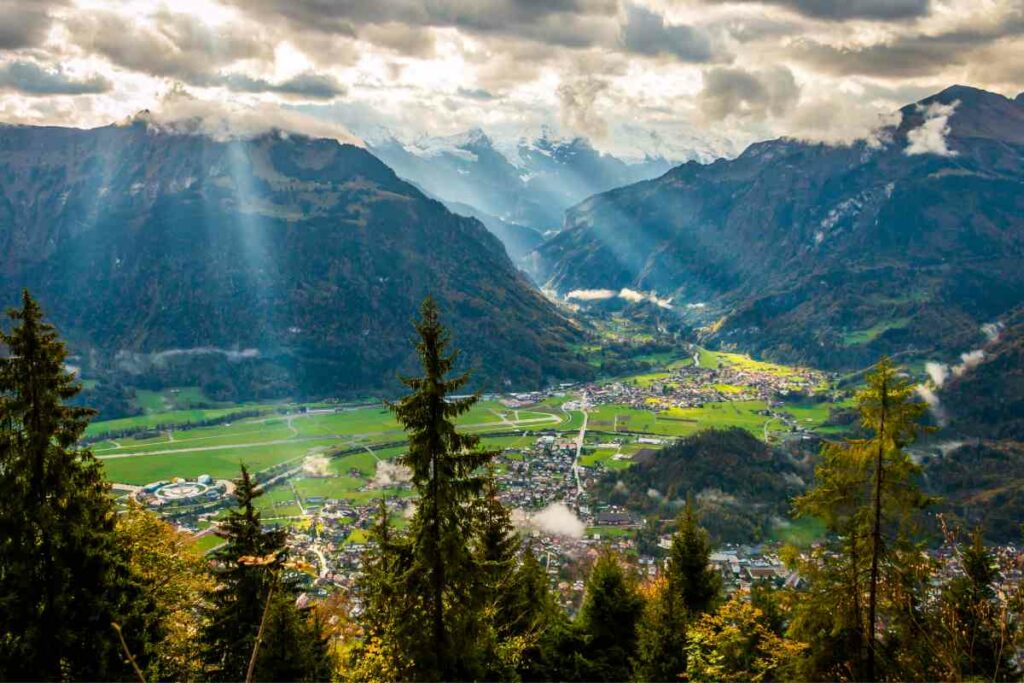
You can skydive, bungee jump, or head to the river for white water rafting and canoeing.
The snowy mountains are also perfect for hiking since the air is mostly clean and crisp.
Even Better – You can take the shorter hike route, Interlaken to Harder Kulm, or the more demanding hike from Pizolhütte to Gaffia.
The crystal clear lakes give stunning views of the surrounding mountains and can be an ideal spot for a romantic getaway in the summer.
You can also attend the famous William Tell Festival which kicks off from July to August.
You may also like ?
4. Lake Geneva
Lake Geneva is Western Europe’s largest freshwater lake and is a hotspot of activity all year round.
In particular, the intersection of River Rhone and the lake has a 460 feet fountain that attracts hundreds of photographers to the area.
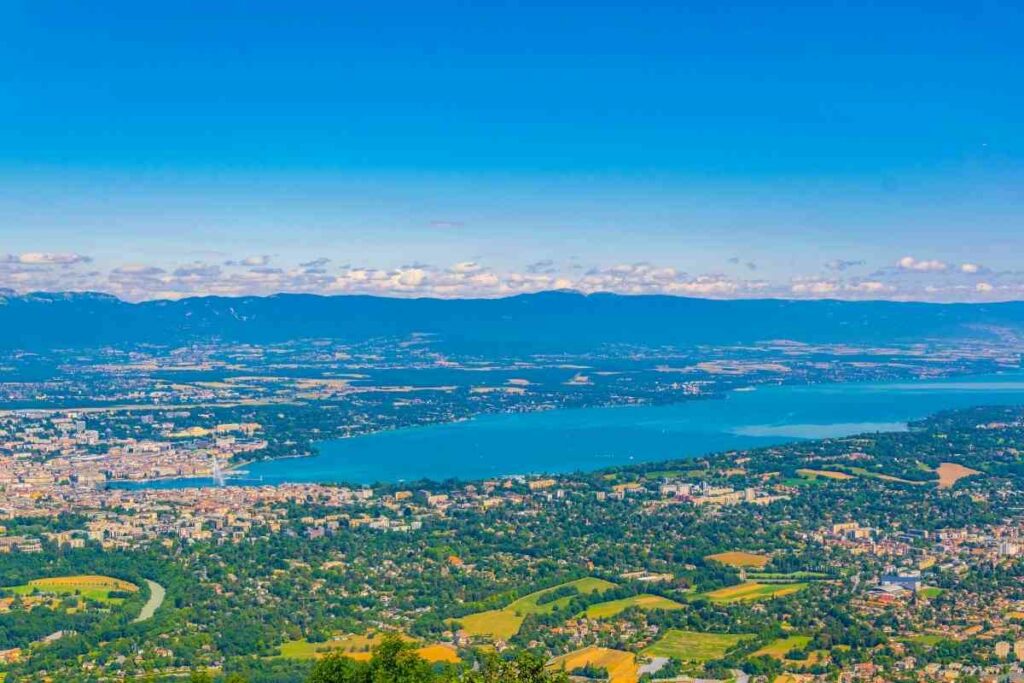
You can also participate in both sport and commercial fishing. The lake has over 30 species of fish.
However, the most common ones include pickerel, perch, char, and the endemic fera.
On the lake, you can also enjoy stunning views of the snow-capped mountains.
The lake is also perfect for all sorts of sporting activities including:
- Waterskiing
- Wakeboarding
- Sailing
- Zip lining
- Paddleboarding
Boardwalks, parks, and gardens surround the lake, and you can wander among historical structures.
One such historical site is the Chateau De Chillon which is situated on the banks of Lake Geneva.
Despite being built in the 14th century, the castle is maintained in mint condition and is usually available for rent for various occasions.
Other places you can visit near the lake include:
- Flower Garden
- Geneva Old Town
- Olympic Museum Lausanne
- St. Peters Cathedral
Guide for Women & Men
5. Zurich
Zurich is not just financial capital it also houses some amazing historical and cultural sites such as the:
- Swiss National Museum
- Lindenhof Castle
- and Kunsthaus
Make sure you spare time to scale the 12th Century Grossmunster to enjoy a bird’s eye view of all the city offers and spend your evening at the Zurich Opera House.
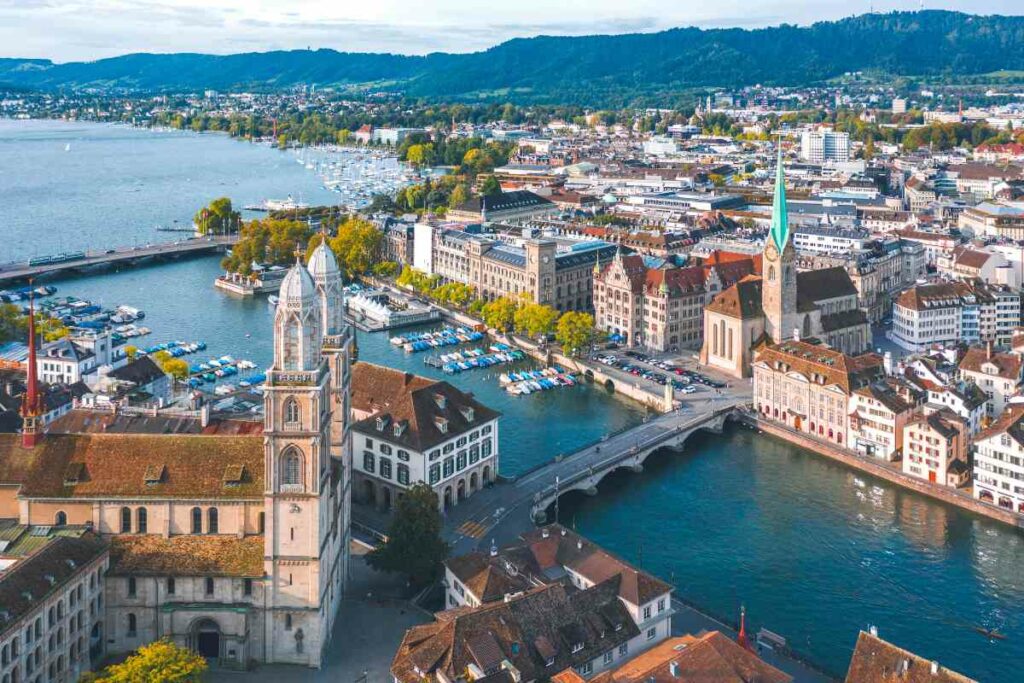
Old Town lights up at night and is the epicenter of Zurich’s nightlife.
Another attraction in the city is Lake Zurich.
The lake gives the residents a good place to sunbathe, swim or take relaxing boat cruises.
There are walking trails around the lake where you can go for romantic walks or mild exercise.
The Old Botanical Garden also offers a beautiful green space full of beautiful and unique plant species.
You can also choose to visit Uetliberg Mountain which offers an escape from the city for nature lovers.
The hikes have unparalleled tranquility as you travel through the country’s most beautiful landscapes.
| NORWAY | SWITZERLAND |
|---|---|
| The Northern Lights | The Matterhorn |
| Bergen Fjords | Jungfraujoch |
| Stavanger | Interlaken |
| Oslo | Lake Geneva |
| Zurich | Chateau de Chillon |
Comparison Between Norway and Switzerland
Norway and Switzerland are very common especially when it comes to their landscape.
However, there are some distinct differences some of which we will discuss below.
Beach Activities
Norway has an extensive coastline and a few islands.
Bask in the serene sandy beaches in the summer or engage in beach volleyball, swimming, and other activities.
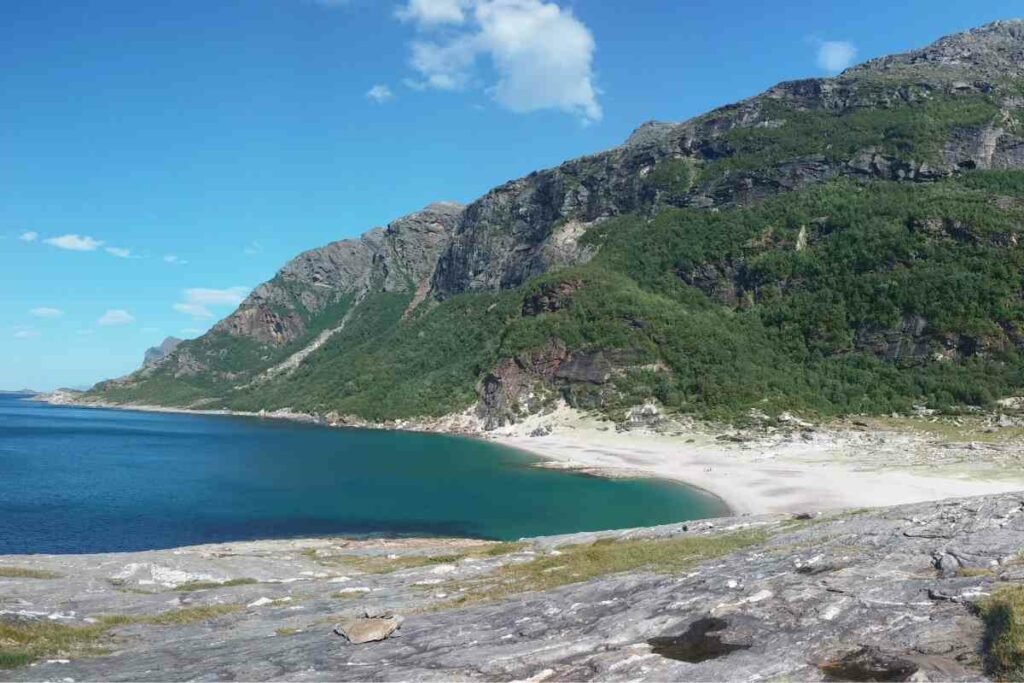
Sea cruises are also ideal for exploring the Norwegian coast and marine life.
Some of the best beaches are:
- Paradisbukta
- Mjelle
- Selje
Due to its geographical location, Switzerland is landlocked so there are no oceanfront beaches to explore.
Transport Systems
Switzerland has one of the finest public transportation systems in Europe.
From state-of-the-art trains, cable cars, and tarmacked roads to numerous airports, you can conveniently travel across the country to any tourist destination.
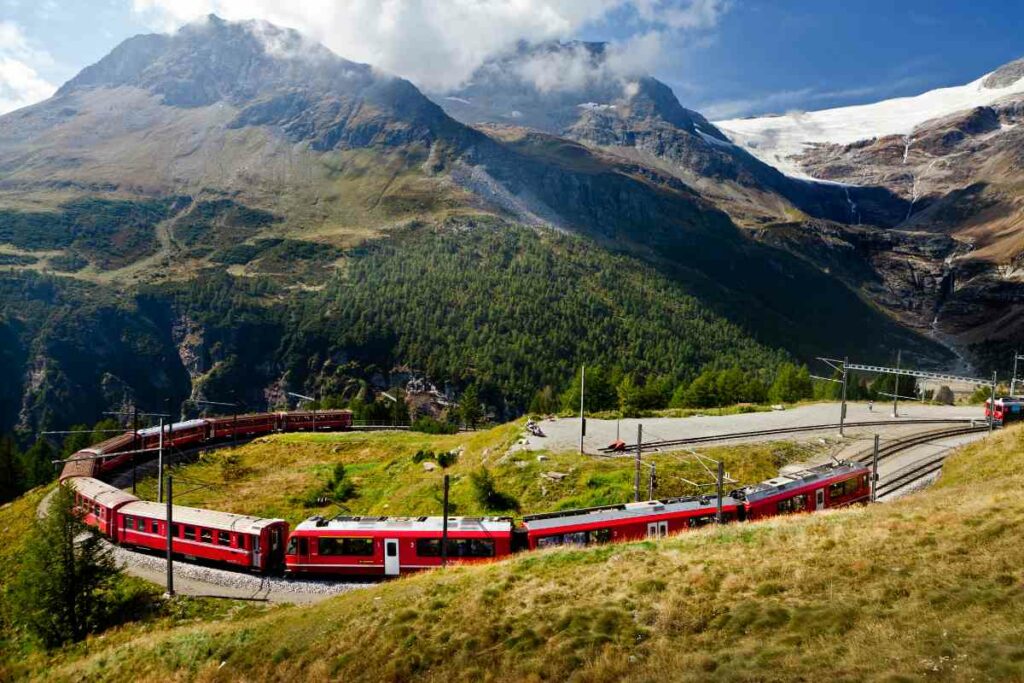
Norway is well developed, but some areas remain quite remote, particularly in the north.
With attraction sites miles apart, it can be challenging to transverse in winter months as the roads get stacked with snow.
Besides, the airplane rides are quite bumpy as Norway is significantly windier than Switzerland.
Best Time to Visit
The ideal time to visit Norway is during the summer (June to August), with July being the hottest month.
It is the perfect time to hit the beach, hike, biking with the weather conducive to outdoor activities.
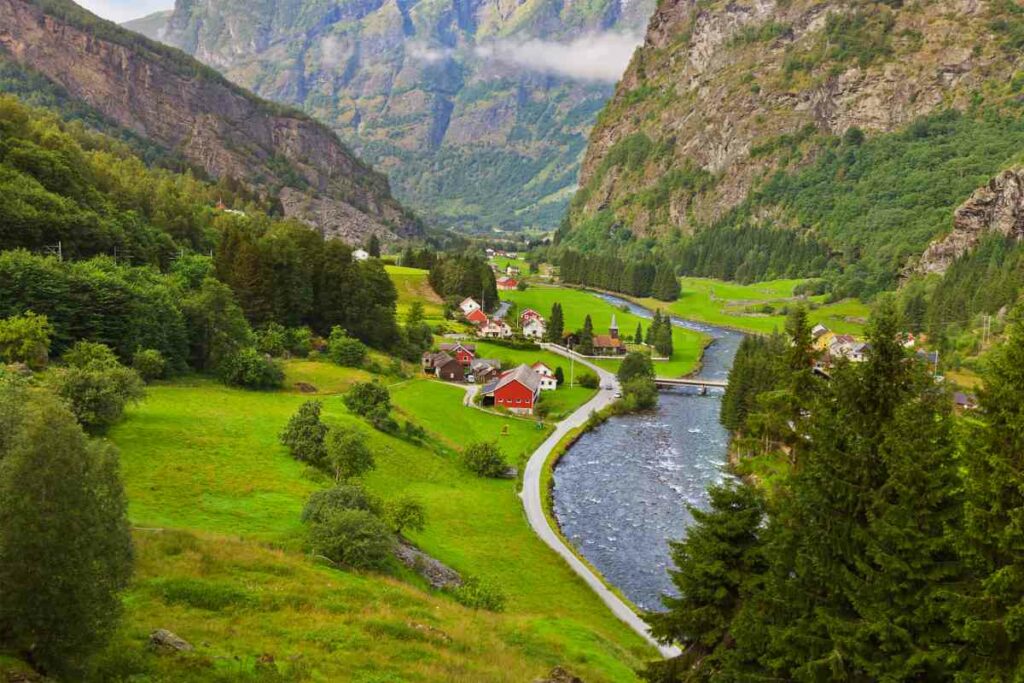
Winter is for skiing, kayaking, Northern Lights, and the famed midnight.
Switzerland is a travel destination that you can visit all year round; it depends on what you hope to experience.
However, April through June or September and October are the best times to travel to Switzerland.
You are less likely to encounter large tourist crowds during this time, and the climate is often at its most favorable.
Climate
Switzerland has fairer weather as it is located near the tropics.
It has warmer temperatures and more sunshine hours as compared to Norway.
Norway is closer to the pole, and the temperatures deep significantly, with a daily average of 9°C to Switzerland’s 15°C.
When Going to Norway – Pack plenty of warm clothing as the night temperature gets almost freezing, and precipitation is typical even in summer.
Languages
Switzerland is a multilingual nation, with Swiss German being the most spoken language.
Most nationals speak 2-3 languages, with an estimated 40% of the population proficient in English.
Most tourist destinations have English signboards, and most guides speak up to 4 languages to answer any queries arising from the tourists.
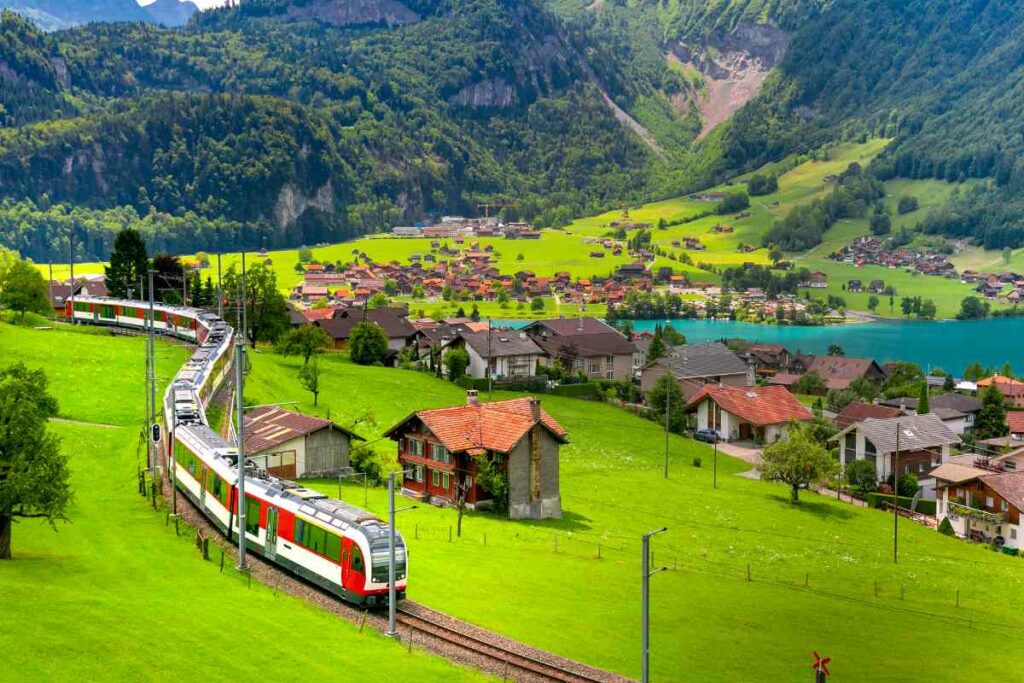
English is the 2nd most spoken language in Norway. While they prefer to communicate in Norwegian, most citizens are fluent in English from a young age.
Coming from the U.S, you will have no problems asking for directions all over the place. Just be courteous.
Friendliness
While Norwegians warm up to visitors, it may need a little effort to engage them in complete conversations.
They are renowned for being blunt, direct, and proud of their culture, be careful not to rub them in the wrong way.
Swiss are amicable people. The country is made up of different ethnicities, and they embrace other cultures more easily than Norwegians.
They quickly stop in the street and lend a hand to any visitor who needs assistance.
Nightlife
Switzerland has a high-octane nightlife.
Zurich is synonymous with A-class nightclubs, with Kauflaten being the most popular, hosting the likes of Madonna and Robbie Williams.
Geneva is best known for music concerts and ballets.
Basel and Bern are other notable cities you can visit for operas, jazz festivals, or to glide the night away.
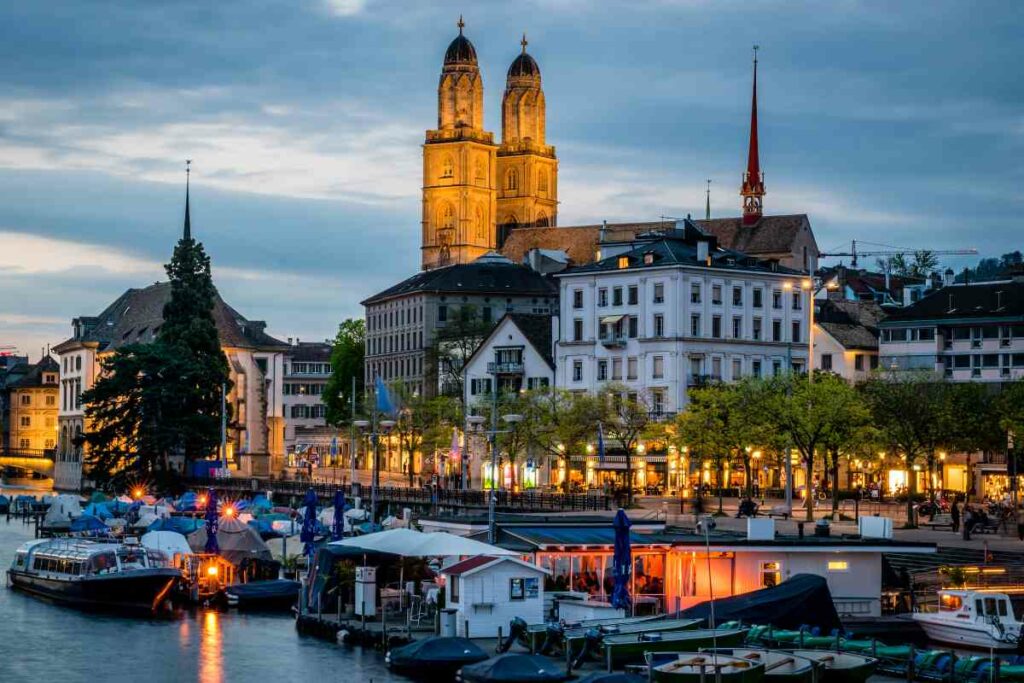
While Norway has decent nightlife, it comes nowhere close to Swiss. The age restrictions are usually 21, unlike 18 for the Swiss.
Identification checks are strict, which explains why you typically find lines of revelers at most venue entrances.
Also, the clubs close up pretty early, usually 2-3 a.m, so that people can prepare for a more productive day.
Verdict
Both countries are fantastic for solo, romantic, family, or group destinations, but Switzerland is a better travel destination.
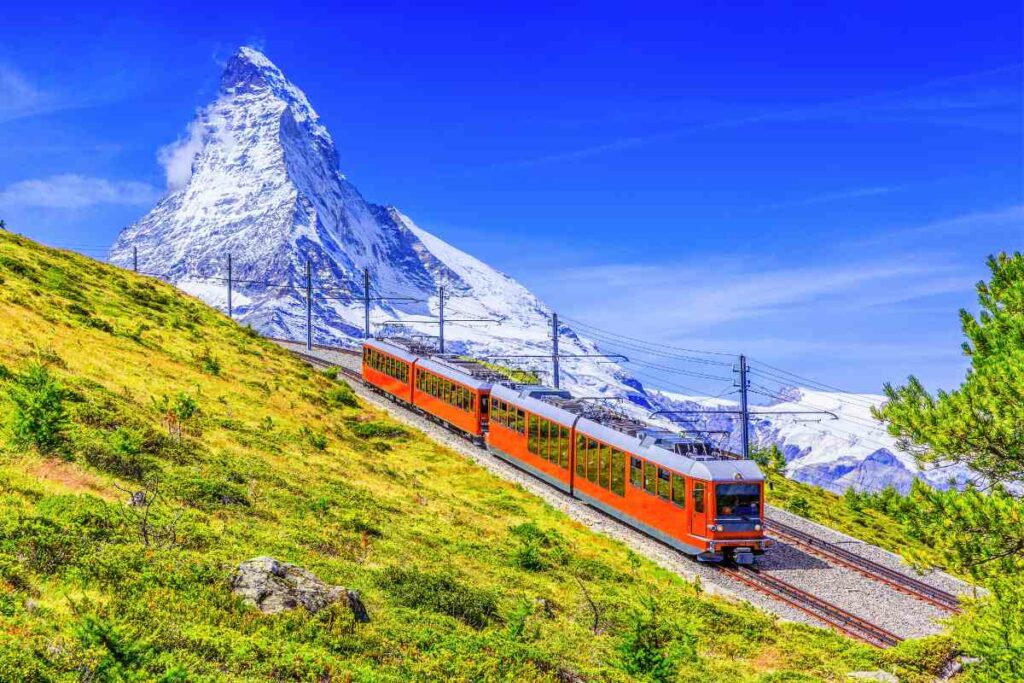
A temperate climate provides pristine conditions for skiing, hiking, and many other outdoor activities.
Friendly locals and a well-developed transport system are also a bonus.
Besides, it has top-notch dining, accommodation, and enjoyment establishments to ensure your visit is pleasurable and wholesome.
Read next – Dangerous animals in Norway
Final Thoughts
Norway and Switzerland are prime destinations for any traveler.
They offer beautiful and fascinating sites for adventure, romance, unwinding, or learning.
If you have yet to visit these countries, start planning your traveling itinerary and make your way there at the soonest for memories that last a lifetime.
- Best vs Worst French Places: A Cultural Guide for First-Time Visitors
- Master the Art of Travelling France: Insights on Must-Visit Spots
- Top three markets in France you must explore
- Essential Driving in France Kit: What Drivers Need to Stay Safe and Legal
- Top 10 Motorcycle Trips in Europe
- What Is Malta Famous For? Malta Local History and Past Events
